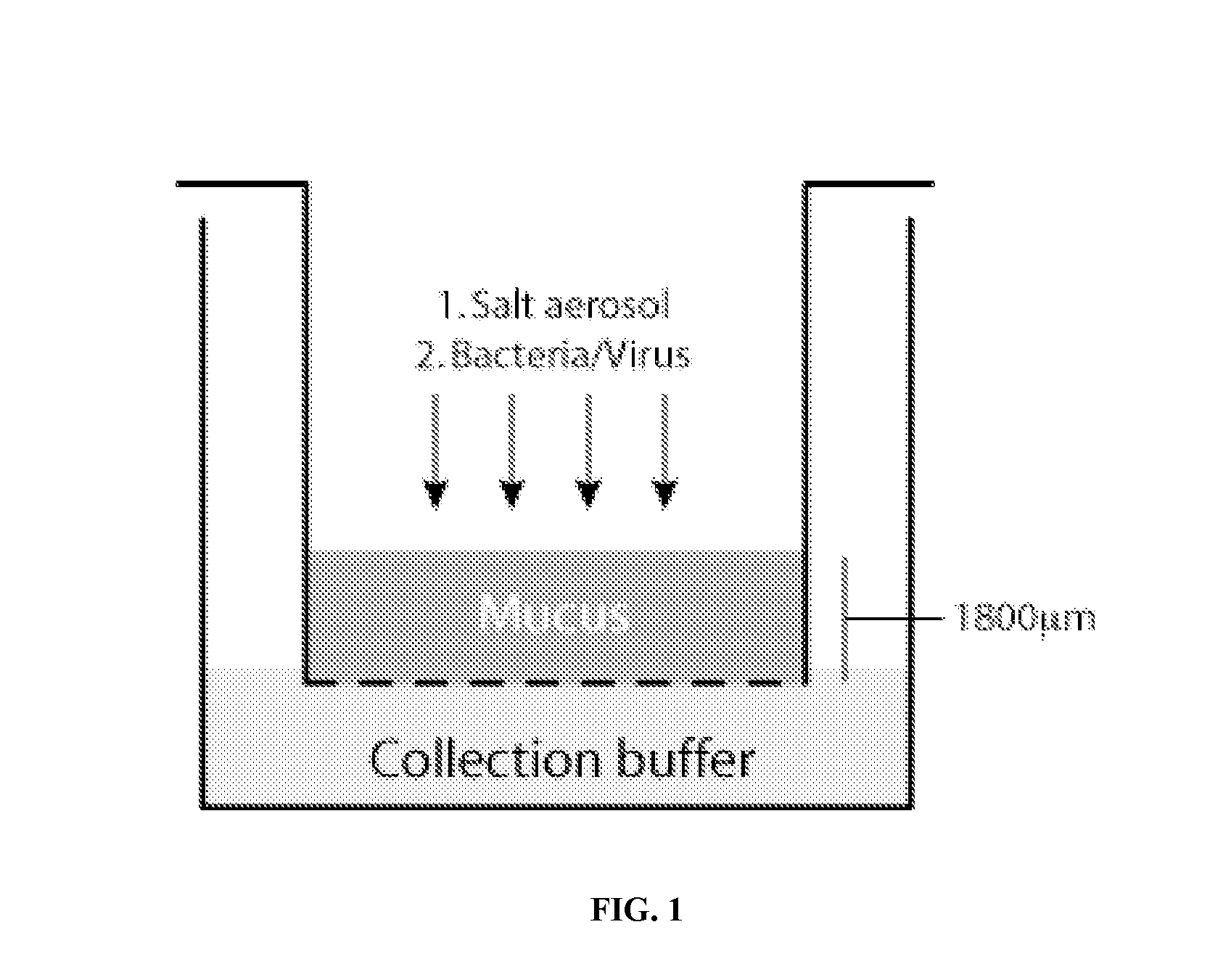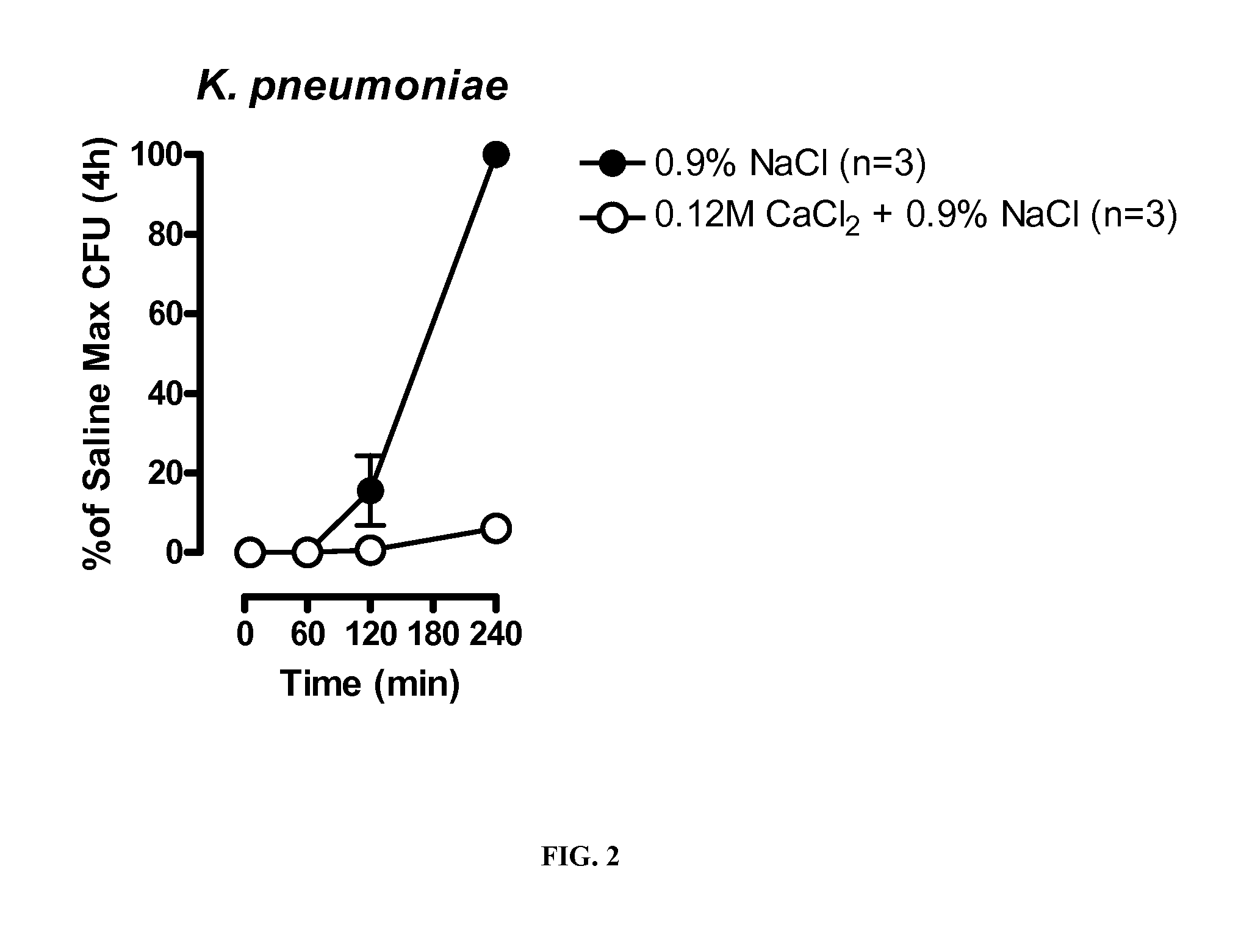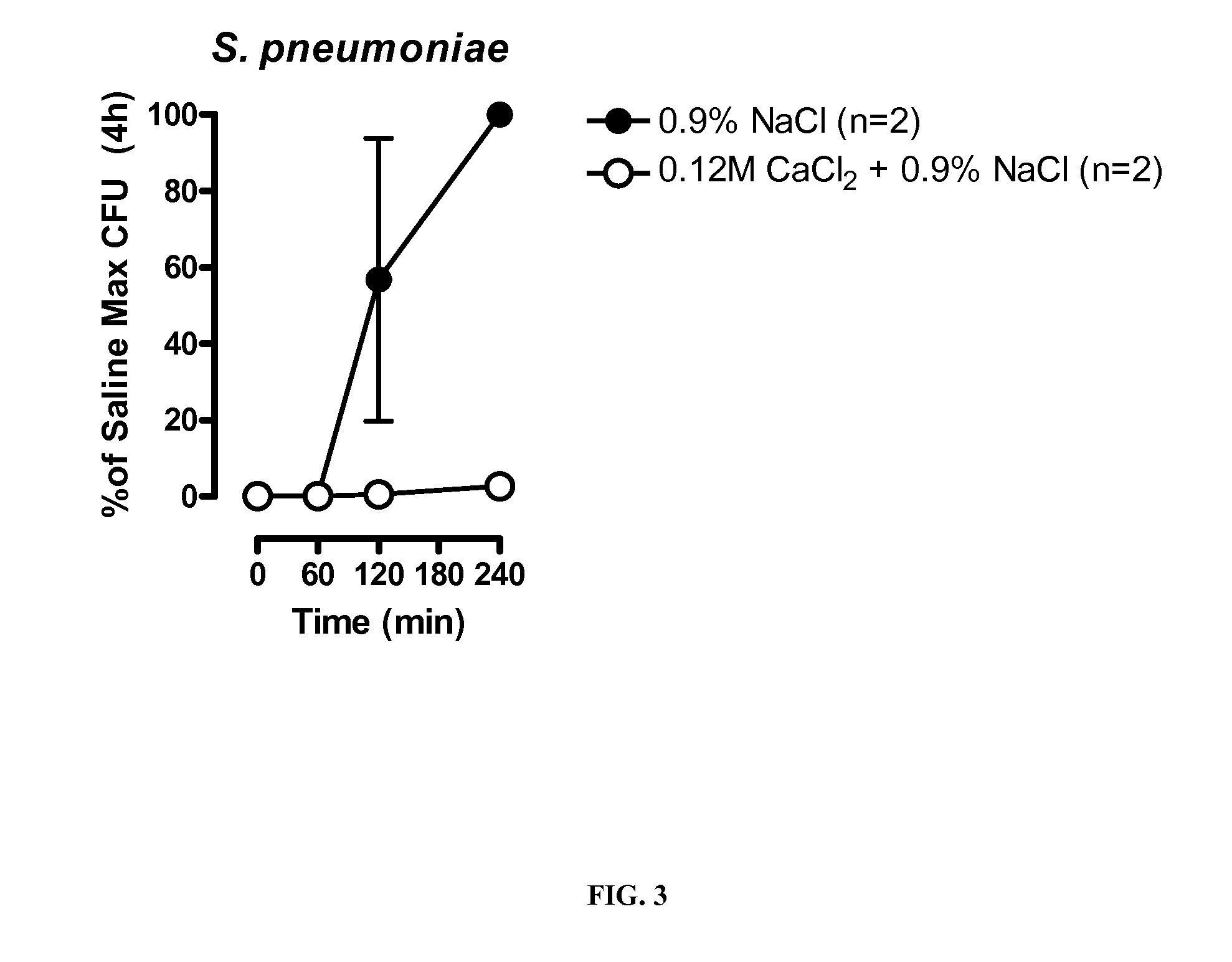Methods for treating and preventing pneumonia and ventilator-associated tracheobronchitis
a tracheobronchitis and pneumonia technology, applied in the direction of antibacterial agents, drug compositions, dispersed delivery, etc., can solve the problems of affecting the treatment of pneumonia and tracheobronchitis, and requiring mechanical ventilation is a high risk factor for the development of tracheobronchitis with high mortality, so as to reduce the transmission of a bacterial pathogen
- Summary
- Abstract
- Description
- Claims
- Application Information
AI Technical Summary
Benefits of technology
Problems solved by technology
Method used
Image
Examples
example 1
In vitro Studies
[0163]In vitro studies were conducted using a model of lung infection. A pass through assay in which the migration of a pathogen through a mucus mimetic was used. In this model, migration of pathogens across a mucus layer is assessed. The assay models the process of lung infection, because in order to establish infection and cause pneumonia in vivo pathogens must pass through the mucus layer lining the respiratory tract.
Pass Through Assay
[0164]In this model, 200 μL of 4% sodium alginate (Sigma Aldrich, St. Louis, Mo.) was added to the apical surface of a 12 mm Transwell membrane (Costar, 3.0 μm pore size) and subsequently exposed to nebulized formulations. Liquid salt formulations were nebulized into the chamber using a sedimentation chamber, and allowed to settle by gravity over a 5 minute period. To control the concentration of salt formulation delivered to each set of wells, the number of nebulizations was varied. When multiple doses were delivered, salt formulati...
example 2
In vivo Studies
[0185]Mouse studies were conducted to assess whether salt formulations are effective in treating pneumonia in vivo.
[0186]Mouse Model
[0187]Specific pathogen-free female C57BL / 6 mice (6-7 weeks, 16-22g) were used in these studies. Mice were given access to food and water ad libitum. For infections, S. pneumoniae (Serotype 3; ATCC 6303) were streaked onto blood agar plates and grown at 37° C. plus 5% CO2 overnight. Prior to infection, animals were anesthetized by intraperitoneal injection of a mixture of ketamine and xylazine. Single colonies of S. pneumoniae were resuspended in sterile saline to OD600=0.3 and then diluted 1:4 in saline. Colloidal carbon was added to 1% and 50 μL of the resulting solution (˜1×106 CFU) was instilled into the left lung of anesthetized mice to produce infection. Following infection, the bacterial titer of the inoculum was determined by serial dilution and plating on blood agar plates. After 24 hours, mice were euthanized and the bacterial b...
example 3
In Vivo Mouse Model
[0210]Bacteria were prepared by growing cultures on tryptic soy agar (TSA) blood plates overnight at 37° C. plus 5% CO2. Single colonies were resuspended to an OD600 ˜0.3 in sterile PBS and subsequently diluted 1:4 in sterile PBS (˜2×107 Colony forming units (CFU) / mL). Mice were infected with 50 μL of bacterial suspension (˜1×106 CFU) by intratracheal instillation while under anesthesia.
C57BL6 mice were exposed to aerosolized liquid formulations in a whole-body exposure system using either a high output nebulizer or Pari LC Sprint nebulizer connected to a pie chamber cage that individually holds up to 11 animals. Mice were treated with dry powder formulations (Table 3) 2 h before infection with S. pneumoniae. As a control, animals were exposed to a similar amount of 100% leucine dry powder. Twenty-four hours after infection mice were euthanized by pentobarbital injection and lungs were collected and homogenized in sterile PBS. Lung homogenate samples were serially...
PUM
| Property | Measurement | Unit |
|---|---|---|
| diameter | aaaaa | aaaaa |
| mass median aerodynamic diameter | aaaaa | aaaaa |
| mass median aerodynamic diameter | aaaaa | aaaaa |
Abstract
Description
Claims
Application Information
 Login to View More
Login to View More - R&D
- Intellectual Property
- Life Sciences
- Materials
- Tech Scout
- Unparalleled Data Quality
- Higher Quality Content
- 60% Fewer Hallucinations
Browse by: Latest US Patents, China's latest patents, Technical Efficacy Thesaurus, Application Domain, Technology Topic, Popular Technical Reports.
© 2025 PatSnap. All rights reserved.Legal|Privacy policy|Modern Slavery Act Transparency Statement|Sitemap|About US| Contact US: help@patsnap.com



